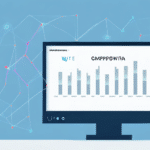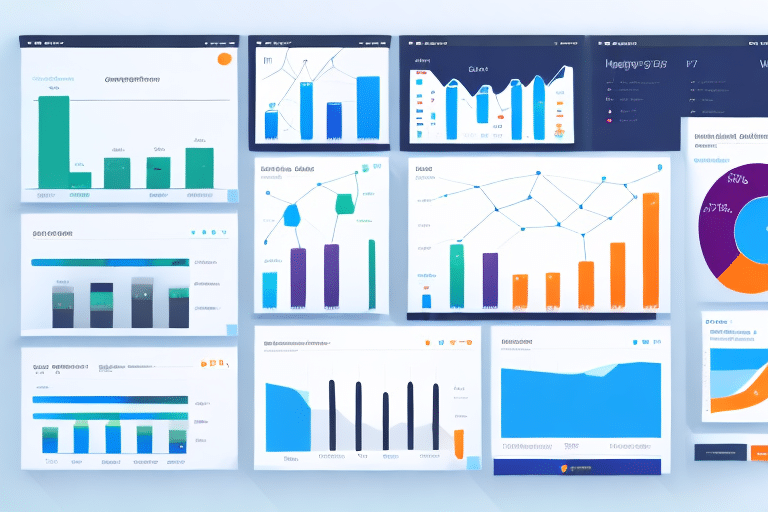How to Increase Your Ecommerce Conversion Rate
The world of ecommerce is highly competitive. With millions of websites and online retailers vying for the attention of consumers, it's more important than ever to optimize your website for better conversion rates. In this article, we'll explore the crucial steps you need to take to increase your ecommerce conversion rate and boost your bottom line.
Why Ecommerce Conversion Rates Matter
Before we dive into how to improve your ecommerce conversion rate, let's first establish why it matters. Put simply, your conversion rate is the percentage of visitors to your website who end up making a purchase. For every 100 visitors, if only 2 end up making a purchase, your conversion rate is 2%.
According to a Shopify report, the average ecommerce conversion rate across industries is approximately 2.86%. Without a good conversion rate, you're leaving money on the table, as you could be converting more visitors into customers. So, it's important to track your website's conversion rate and take measures to improve it over time.
One of the main benefits of having a high conversion rate is that it can lead to increased revenue and profitability for your ecommerce business. By converting more visitors into customers, you can generate more sales and ultimately increase your bottom line. Additionally, a high conversion rate can indicate that your website is effectively engaging and persuading visitors to make a purchase, which helps build trust and credibility with your audience.
Identifying Your Current Conversion Rate
The first step in improving your ecommerce conversion rate is to identify your current conversion rate. Use tools like Google Analytics to track your website's traffic and conversion rate. Once you have this data, you can set a baseline for improvement.
It's important to note that your conversion rate may vary depending on the source of your traffic. For example, visitors from social media may have a lower conversion rate compared to visitors from search engines. By analyzing your conversion rate by traffic source, you can identify areas where you may need to improve your marketing efforts or website design to better target your audience and increase conversions.
Analyzing Your Website's User Experience
The next step is to analyze your website's user experience (UX). This includes everything from your website's design to its navigation and checkout process. A clunky, confusing website will deter visitors from making a purchase, so it's crucial to ensure that your website is user-friendly and intuitive.
Start by conducting a UX audit of your website. This will help you identify areas where your website's design and functionality could be improved. For example, you may find that your website is slow to load or that the checkout process is too complicated.
Another important aspect of UX is the content on your website. Make sure that your website's content is clear, concise, and relevant to your target audience. Use headings, subheadings, and bullet points to break up large blocks of text and make it easier for visitors to scan and find the information they need.
Additionally, consider implementing user testing to get feedback from real users on their experience with your website. This can provide valuable insights into areas that need improvement and help you make data-driven decisions to optimize your website's UX.
Optimizing Your Website's Design for Better Conversions
Once you've identified areas for improvement, it's time to optimize your website's design. This can involve a range of measures, from improving page loading speeds to simplifying your website's navigation.
- Mobile-Friendly Design: Ensure that your website is mobile-friendly. With more than half of all internet traffic now coming from mobile devices, a mobile-friendly website is essential to maximize conversions. Use responsive design techniques to ensure your site looks and functions well on all devices.
- Clear Calls-to-Action (CTAs): Use clear and concise CTAs that guide visitors towards desired actions. Make sure your CTAs are prominently displayed and communicate what action you want your visitors to take, such as "Buy Now," "Sign Up," or "Learn More."
- Page Speed Optimization: Slow-loading pages can significantly reduce conversion rates. Optimize images, leverage browser caching, and minimize code to ensure fast load times.
- Simple Navigation: Simplify your website's navigation to help users find what they're looking for quickly and easily. Use logical categories and limit the number of menu items to avoid overwhelming visitors.
Streamlining Checkout and Payment Processes
One of the most critical areas to focus on when optimizing your website's UX is the checkout and payment process. Many customers abandon their carts at this stage, so it's essential to ensure that the checkout process is as streamlined as possible.
- Reduce Checkout Steps: Minimize the number of steps required to complete a purchase. A single-page checkout can often lead to higher conversion rates compared to multi-page checkouts.
- Guest Checkout Options: Offer guest checkout to allow customers to make a purchase without having to create an account. This reduces friction and can increase conversion rates.
- Multiple Payment Options: Provide various payment options, such as credit cards, PayPal, Apple Pay, and other popular methods to cater to different customer preferences.
- Clear and Visible Payment Methods: Display accepted payment methods clearly to reassure customers that their preferred payment option is available.
Ensuring that the checkout process is mobile-friendly is also crucial. With more customers shopping on mobile devices, a seamless checkout experience can prevent frustration and cart abandonment. Make sure that the checkout form is easy to navigate on smaller screens and that payment options are clearly visible and accessible.
Writing Compelling Product Descriptions and Reviews
The quality of your product descriptions and reviews plays a key role in whether or not a customer decides to make a purchase. Compelling product descriptions and customer reviews can help reinforce customer confidence in your products and motivate them to make a purchase.
- Highlight Unique Features: When writing product descriptions, emphasize the unique features and benefits offered by the product. Use high-quality images to showcase your products to their best advantage.
- Encourage Genuine Reviews: Foster an environment where customers feel encouraged to leave genuine reviews. Positive reviews build social proof and trust for your site.
- Concise and Readable: Keep product descriptions concise and easy to read. Use bullet points and short paragraphs to make the information easily digestible.
- Respond to Reviews: Engage with customers by responding to both positive and negative feedback. This shows that you value your customers and are committed to providing excellent customer service.
Leveraging Social Proof to Boost Conversion Rates
Another powerful tool in ecommerce is social proof. Social proof is the idea that people tend to follow the actions of others, and it can be used effectively on your website.
- Display Customer Reviews: Showcasing customer reviews can help potential buyers feel more confident in their purchasing decisions.
- Showcase Trust Badges: Trust badges such as security seals, industry certifications, and payment method icons can increase trust and credibility.
- Highlight Popular Products: Displaying the popularity of certain products can encourage visitors to choose them.
- User-Generated Content: Feature photos or videos of customers using your products or testimonials from satisfied customers. This real-life content builds trust and encourages others to buy.
Offering Free Shipping and Returns
Offering free shipping and returns is another effective way to boost conversions. Customers are often deterred by unexpected shipping fees, so offering free shipping can help remove barriers to purchase.
- Free Shipping: Consider offering free shipping either universally or when customers reach a certain purchase threshold.
- Free Returns: Provide a hassle-free return policy to reassure customers that they can shop with confidence.
Offering free shipping and returns can also positively impact your brand's reputation. Customers are more likely to recommend your business to others if they have had a positive experience with your shipping and returns policies, leading to increased word-of-mouth marketing and more sales.
Implementing Exit-Intent Popups to Capture Abandoned Carts
Abandoned carts are one of the biggest frustrations for ecommerce retailers. To combat this, implement exit-intent popups to capture visitors who are about to leave your website without completing a purchase.
- Offer Incentives: Use exit-intent popups to offer discounts, free shipping, or other incentives to encourage visitors to complete their purchase.
- Strategic Timing: Ensure that popups appear at the right moment to maximize their effectiveness without overwhelming visitors.
However, use exit-intent popups strategically to avoid annoying visitors with too many offers. A well-designed popup with a clear and compelling message can effectively capture abandoned carts, while excessive popups can drive visitors away.
Additionally, track the success of your exit-intent popups by analyzing data such as conversion rates and click-through rates. This will help you optimize your popups and improve their effectiveness in capturing abandoned carts.
Creating Urgency with Limited-Time Offers and Discounts
Limited-time offers and discounts can be effective in creating a sense of urgency and motivating customers to buy. By putting a time limit on your offers, you encourage customers to make a purchase before the offer expires, leading to more conversions.
- Time-Sensitive Promotions: Use countdown timers on your website to highlight the limited availability of offers.
- Exclusive Discounts: Offer exclusive discounts to first-time buyers or loyal customers to incentivize purchases.
However, use these tactics strategically. Overuse can lead to customers becoming desensitized to urgency, ultimately reducing their effectiveness. Ensure that each offer or discount is relevant and valuable to the customer to drive meaningful conversions.
Using Email Marketing to Encourage Repeat Business
Email marketing can be a powerful tool in encouraging repeat business and increasing conversions. By sending personalized product recommendations and special offers to your customers, you can increase engagement and repeat purchases over time.
- Personalized Recommendations: Use customer data to tailor product recommendations that match their interests and past purchases.
- Automated Email Campaigns: Implement automated email sequences for cart abandonment, post-purchase follow-ups, and re-engagement campaigns.
- Exclusive Offers: Provide exclusive discounts or early access to new products for your email subscribers to foster loyalty.
Tracking Your Results with Analytics
As you implement these strategies, it's crucial to track your results using analytics tools. Monitoring your progress helps you identify what is and isn't working in your approach, allowing you to tweak your strategies as needed and continue optimizing your website for better conversion rates.
- Key Metrics: Track metrics such as conversion rate, average order value, cart abandonment rate, and customer lifetime value.
- Regular Reporting: Set up regular reports to monitor trends and make data-driven decisions.
- Benchmarking: Compare your performance against industry benchmarks to identify areas for improvement.
A/B Testing Your Strategies for Maximum Impact
A/B testing is another crucial tool in ecommerce optimization. This involves creating two versions of a web page or element (e.g., product pages, checkout pages) and testing them to see which performs better in terms of conversion rate.
- Identify Variables: Determine which elements to test, such as headlines, CTAs, images, or form layouts.
- Run Controlled Experiments: Ensure that tests are run under similar conditions to obtain accurate results.
- Analyze Results: Use statistical analysis to determine which version performs better and implement the winning variant.
A/B testing helps you fine-tune your approach and ensure that you're maximizing your conversion rate over the long term. Continuously testing and iterating based on data insights can lead to significant improvements in your ecommerce performance.
Conclusion: Increasing Ecommerce Conversion Rates is a Continuous Process
Improving your ecommerce conversion rate requires a comprehensive approach, as many factors can contribute to low conversion rates. By optimizing your website's design and UX, offering incentives and discounts, and leveraging social proof and email marketing, you can increase both engagement and conversions over time.
Remember, increasing ecommerce conversion rates is a continuous process. By tracking your results and continually tweaking your approach, you can keep improving your website's performance and maximizing your sales over the long term.






















